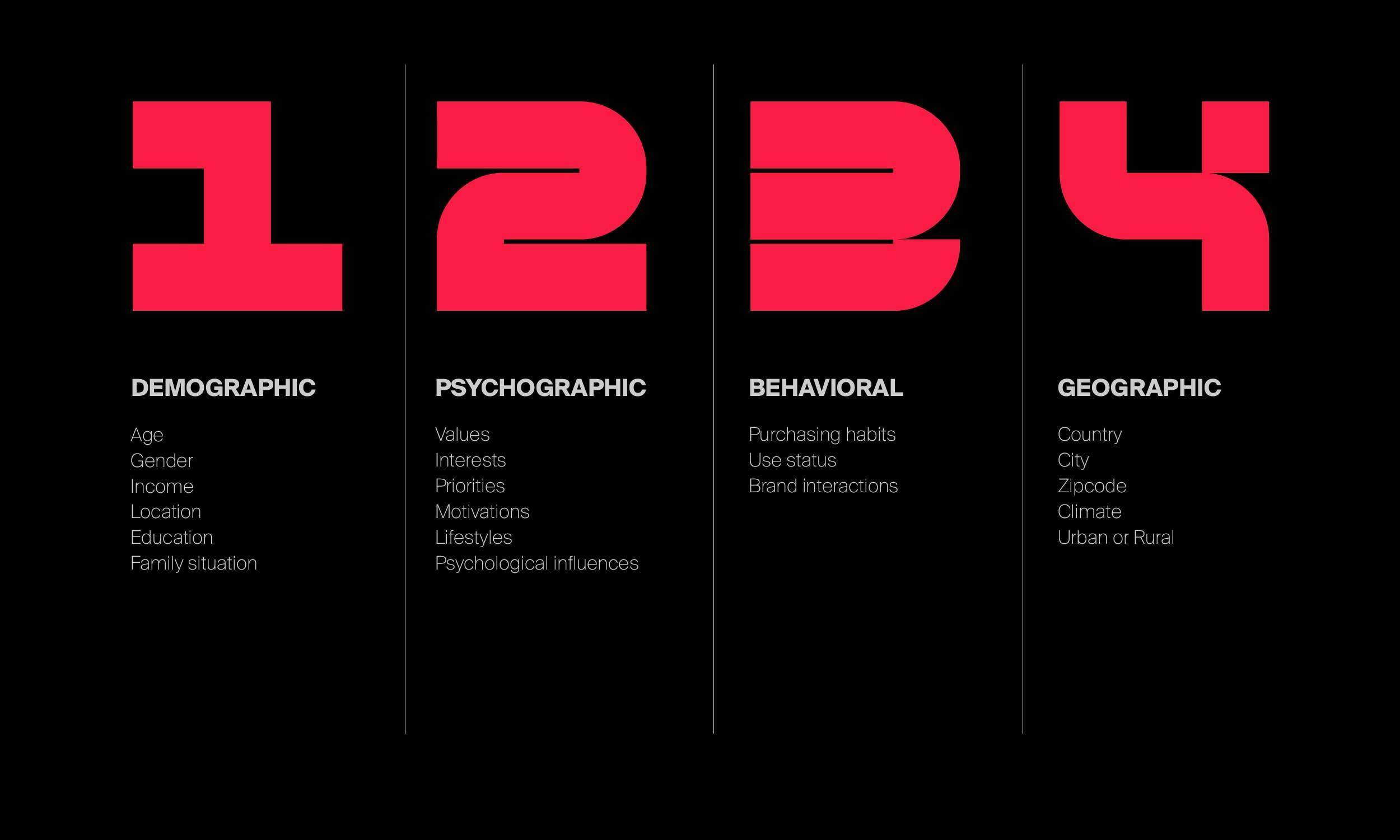
For an architectural firm, a target market is not a one size fits all situation. What you will find here are ideas that will help you solidify your process into finding your perfect target market.
For an architectural firm, a target market is not a one size fits all situation. If you cast a wide net just hoping to get any kind of client, you may think you’re giving your firm more opportunities when you’re limiting yourself in reality. On top of that, you may be sending potential business away because you’re not giving a solid impression of knowing who you are and where your strengths lie.
A target market for an architectural firm will vary depending on your specialty, your past business, and what you can provide. For example, architects can provide services for homeowners, developers, the government, contractors, and more. If you have a niche or a specialty, you should be looking to exploit that as it will set you apart from the rest of the pack.
The more you understand your firm’s strengths and unique place in the market, the more you can specify your approach to your target market. When thinking about a target market, specificity is going to be your friend.
If you’re reading this blog and thinking it will give you a target market, you would be wrong. It’s not that easy, and you’re not going to find your target market in a few lines of a blog. What you will find here are ideas that will help you solidify your process into finding your perfect target market.
Here’s what we’ll cover:
- What a Target Market is and How to Use it
- Beginning With Your Current Customers
- How to Leverage Your Existing Data
- Market Segmentation (what it is, benefits & the four types)
- Defining Your Unique Value Proposition
- Single vs. Multiple Target Markets
What is a Target Market & How Do You Use It?
First off, a target market is your ideal group of people that you want to reach with your marketing. These would be the people most likely to use your architectural firm. It is a trap to base your target on a broad category, such as age. As we mentioned above, specificity will be your friend when creating your target market, which is valid for a few reasons.
Targeting anyone interested in your business is wildly expensive and targeting such broad categories belies the fact that you may have a niche that could give your smaller architectural firm the ability to compete on a bigger scale.
Be as detailed as possible with your target market and keep this in mind; your target market is not about exclusion. Defining your market parameters doesn’t mean others won’t use your firm; it simply means your marketing dollars will be focused on a specific target.
A target market should be based on research if it is going to be effective. A good target market should also be adaptable and change as the firm grows, or you learn more about your current clientele and compare it to your target market. Research is going to help you define and pinpoint that market.
The correct target market will be much more affordable for your firm to market to and give you a competitive advantage.
Beginning With Your Current Customers
If you want a quick snapshot of who will be interested in using your architectural firm, look no further than your current customers. They can be your base as you build out your target market. They already like your work, bring you business and use your services. Now, look at them closely. If you’ve been tracking, then you have a plethora of data right away. More data translates to more details, which means specificity, which ultimately means a better target market. Dig deep into your current customer base, find out what they have in common, and discover why they come to you.
How to Leverage Your Existing Data
Before you run off and start digging or making assumptions that are based on “a feeling,” start in your backyard. Look at what you have, cull the data at hand, and build from there. Start with a clear definition of what you’re going after; for example, you could look at the clients who have been most profitable in the last two years. Once you’ve defined that category, then look at all the demographic, psychographic, geographic, and behavioral data you can gather on those most profitable clients. This data will give a clear starting point for what your target market should be.
We cannot stress this too often; being specific with what and who you’re going after will pay off nicely when you put your final target market together. Use what you already have before you go off looking elsewhere.
Market Segmentation
What is Market Segmentation?
Market segmentation is the process of dividing a target market into smaller, more precisely defined groups. This helps you put customers, current and potential, into groups that share similar characteristics—all toward the goal of being more specific with your target audience.
Segmentation is important because it makes it easier to focus your marketing resources and pinpoint your efforts to reach your most valuable customers. Once you’ve got them, then it will become easier to reach your firm’s goals.
Market Segmentation Benefits
There are multiple benefits to market segmentation. We’ll list five here to get you started. There are more to discover as you do your research for your target market.
- Stronger messaging: when to know to whom you’re talking, then you can be specific in your messaging. This avoids the vague generalizations that cast a wide net but miss the particular audience.
- Use Effective Tactics: instead of wading through hundreds of marketing tactics, segmentation allows you to pinpoint the tactics that will work best for the audience you’re targeting.
- The hyper-targeted ad: digitally you can target an audience by age, location, purchasing habits, and more then you can use this data to create specified marketing campaigns.
- Quality Leads That Convert: the specificity of segmentation allows for better-targeted ads, which will be more likely to attract and convert.
- Focus: targeting through segmentation keeps you on track with your marketing objectives. It will also help you identify new marketing opportunities that focus on your target audience and avoid distractions.
That’s five to whet your appetites. You’ll discover more as you build your target audience. Now back to our four types of market segmentation.
The Four Types of Market Segmentation
When you’re creating a target market for your architectural firm, it’s essential to understand the four types of market segmentation which are:
- Demographic segmentation
- Psychographic segmentation
- Behavioral segmentation
- Geographic segmentation
Within each of these segmentations, there exists a myriad of sub-categories that can further identify customers and audiences. In this article, we will deal with the four main categories.

Demographic Segmentation
This is the most popular and commonly used segmentation referring to statistical data about a group of people. Examples of this type of segmentation data would be,
- Age
- Gender
- Income
- Location
- Education
- Family situation
This information is usually statistical and factual so, it is relatively easy to uncover on most market research sites. When you decide on a target market, you can use this information to find out which individuals or businesses are likely to engage the services of your architectural firm.
Psychographic Segmentation
This segments people according to factors that relate to their personalities and characteristics. Examples would be:
- Values
- Interests
- Priorities
- Motivations
- Lifestyles
- Psychological influences
For these, you’ll need to do some research as they are not as evident as demographics, and they are subjective in nature and not data-focused.
Behavioral Segmentation
This segment focuses on the customer’s actions. Examples would include,
- Purchasing / spending habits
- Use status
- Brand interactions
These activities will indicate how your customer interacts with your brand or your firm. This segment will also give you a view of how they engage in activities away from your brand. All of which becomes data that is usable when creating a more precise target market.
Geographic Segmentation
This is the simplest segment as it deals with customers bases on geographical location and geographical borders. Examples include:
- Country
- City
- Zipcode
- Climate
- Urban or Rural
This segment could help you specify the types of services your target market may be interested in for your architectural firm. Those in warmer climates may have different design needs than those in colder climates and the like.
Again, within each of these segmentations are sub-categories that you’ll want to put some research into; being specific can only serve to create a better understanding of who your target audience is.
Define Your Unique Value Position
What problems do you solve? What needs do you meet? What desires do you fulfill? Do you have a particular niche that no other firm is paying attention to? And, what is the key benefit that you provide to the market that allows you to be unique and stand out? When you pose and answer these questions, then you’ll be able to make sure your target market resonates with your unique value proposition. Again, it is about being specific to who you are and what you can bring to the market.
Single vs Multiple Target Markets
Currently, you may have one target market, and that could be working well for you. However, don’t disregard the chance to upgrade to multiple markets.
As an architectural firm, you may focus on residential offerings; however, maybe you have the right people and the right opportunities, and now, you’re looking to expand into commercial work. You cannot rely on the same target market or data you’re using for your residential clients and expect to attract a commercial following. You’ll need to update everything.
The same holds for a geographical expansion. Say your firm is now opening up to work in another state; you’ll want to upgrade your target market to include that location.
If you’re going to engage multiple target markets, just remember that you’ll want to be specific and use the data you gather for the four types of market segmentation correlating to the new market you’re entering. Be specific. Do the research. Create a strong, specific second target market.
Let Us Make This Easy
We have presented a lot of helpful information; however, it may be a bit overwhelming. That’s okay; you’re an architectural firm, you have a particular set of skills that make you who you are. So, do we.
We have years of experience marketing for architecture firms, and we know what works and what doesn’t. Sign up for a free consultation with our marketing team. We’ll simplify all this information and create a target market that works for your firm and your specific needs. Along the way, we’ll probably help you redefine and specify who you are and what your value position is in the market. Not ready to chat? Sign up for our architecture marketing emails for the latest on marketing in the industry.
Work with us.
Tell us where you want to be. We'll help you get there.

